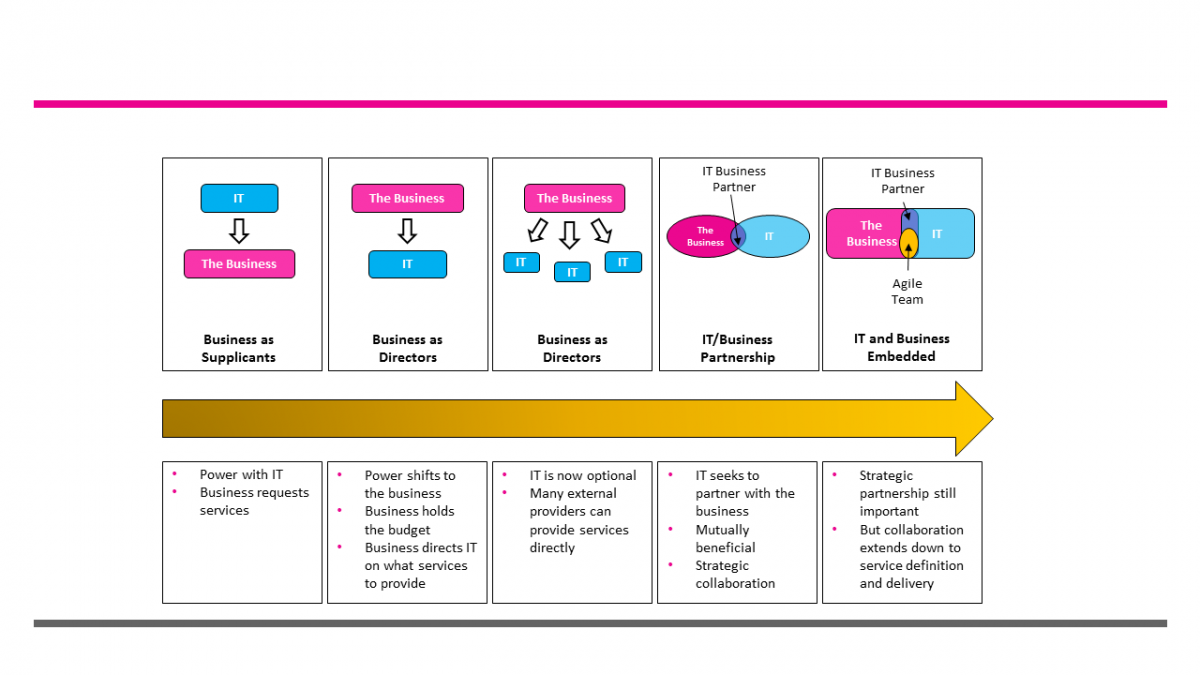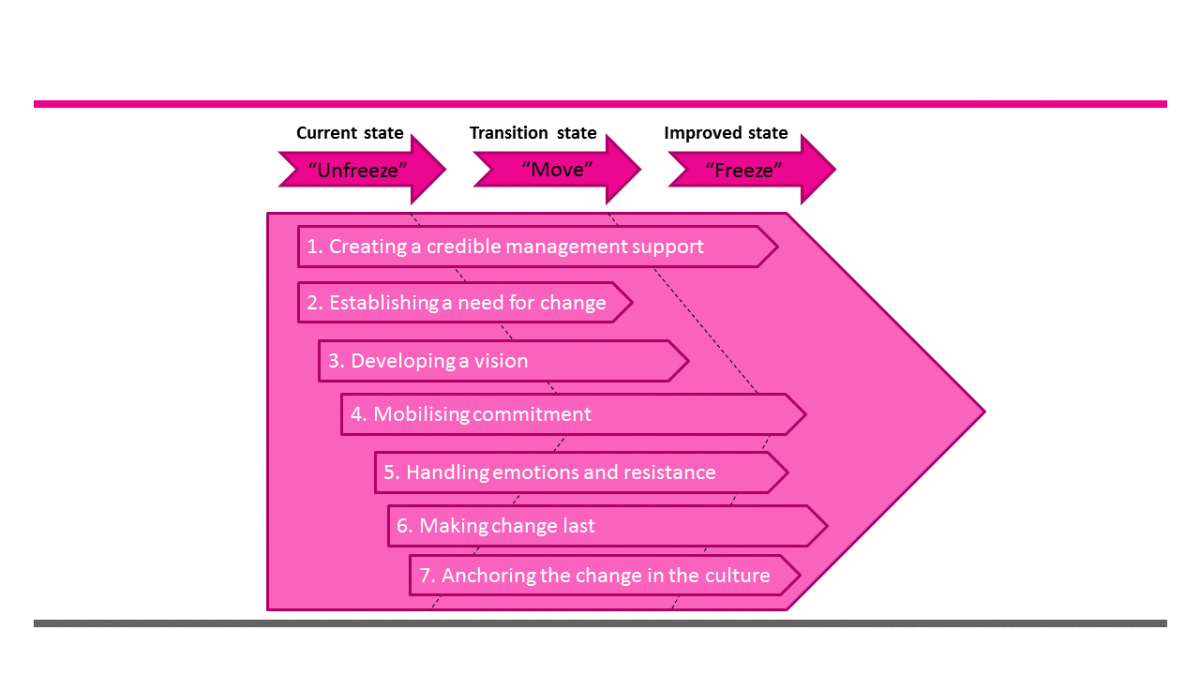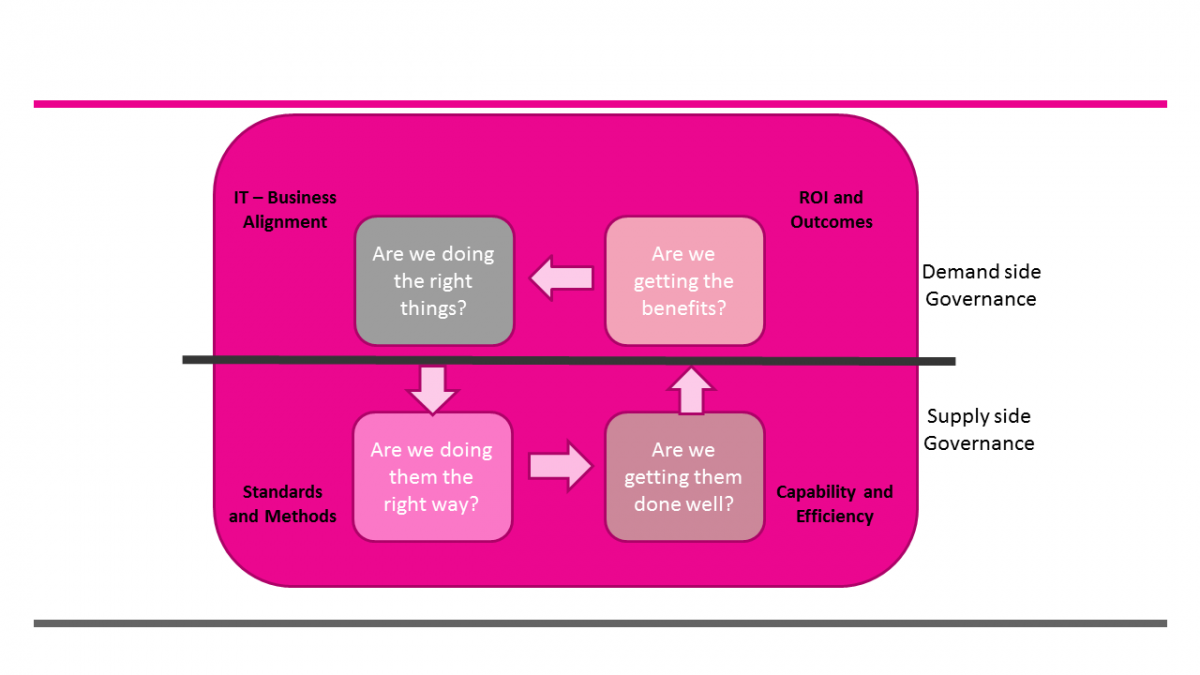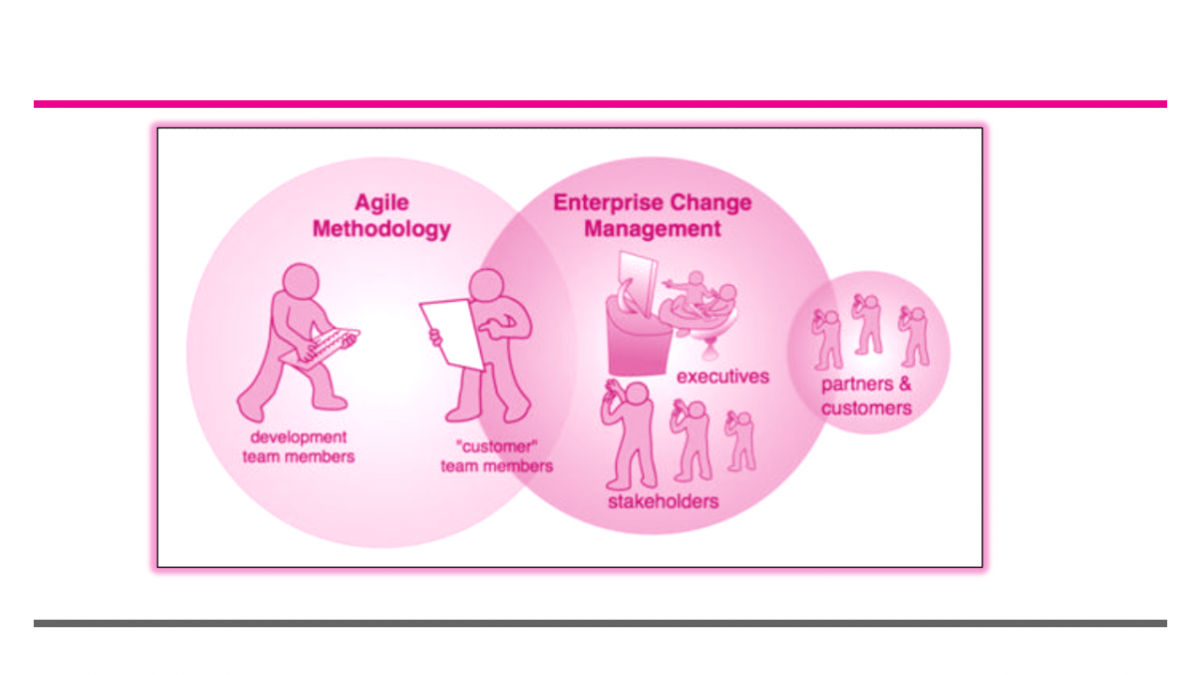Agile Special Interest Group 28th January 2016 Post-Meeting Report

Following the Group’s last meeting in 2015 which focused on successful multi-location working, the latest Agile Special Interest Group was held in London on 28th January 2016.
The agenda covered:
- How to engage with the Business
- Building trust
- Role of the Business
- Governance
- Making it happen
-
Contracting and supplier management
- Metrics and measures
- Key contracting differences
- Commercial models
- Choosing the right supplier
- Relationship management
The session began by discussing the importance of engaging the Business and the evolution of the relationship between IT and the Business. Traditionally, as illustrated below, the Business held the balance of power and the IT budgets and tended to keep IT at arm’s-length whilst directing IT on what service to provide. As the reliance of the Business on IT increases, the relationship needs to move to a more collaborative approach and, finally, with the introduction of an Agile team, IT and the Business need to become embedded; a strategic partnership that extends to service definition and delivery. The Group examined where their respective organisations currently are in that relationship model and how it is essential to move to a collaborative “one team” approach to bring the success of an Agile delivery model.

The Group then moved on to debate the importance of building trust and the journeys that their individual organisations have been on in order to build collaborative relationships. It was determined that there was no ‘cookbook’, no simple recipe to outline how Agile should be implemented; it grows over time with buy in from the organisation. Finding relevant individuals with whom to develop trust is a key factor and making sufficient time to build trust is a given. It was agreed that there is sometimes a blame culture where it is easy to say a ‘failure’ is IT’s fault but the organisation must change the way it thinks fundamentally in order to get the relationship and trust to work – and ultimately any failures can be seen as a source of learning and continuous improvement rather than a cause for blame and recrimination.
A customer case study was introduced, focussing on E-Commerce, which discussed how a retail organisation had embraced moving towards being Agile from both the Business and IT working together. The Business recognised that they were not spending their money wisely on software development and relevant metrics and measures were put in place to determine the business value of projects. The case study referenced a large-scale development around search engine within the E-Commerce platform when the underlying problem was a too complex checkout process which was the root cause of why consumers were not completing their web transactions. Once it was established that business value was not being achieved necessarily from where the company was investing their money, this enabled the delivery model to change the way the organisation made decisions, allowing it to make short term commitments based on real-time market based realities. The Group agreed that it is vital to have a key ambassador in a senior role and to look at the overall value versus ROI.
The Group then moved on to discuss an action plan for creating sustainable change as illustrated below. The challenge is to win hearts and minds else it becomes an uphill struggle.

It was decided that 50% of time should be allocated towards changing hearts and minds or the other 50% will not work. It is about managing stakeholders (not just technology) and gaining buy in through communication, training and ‘Change Champion’ plans to address each group of stakeholders and leverage the supporters. The CIO plays a vital role and it is important to stress that ‘we are a team’ rather than separate IT/Business functions. Only by working together as a team can organisations obtain the best value and this relies on a complete change in mindset.
The Group suggested that the Marketing Campaign Model would translate well into the area of reinforcement of the Value Driven objectives for IT. Essentially, by looking at the cost/value of marketing campaigns, metrics are put in place to measure the success of any given campaign against objectives and then campaigns can be changed, if necessary, depending on those outcomes. In the same way, value management and the alignment of solutions with value can be used by IT to support the overall business value and objectives.
Product Owners (POs) were discussed by the Group. The PO leads the Agile team by conveying their vision to the team and is usually a senior business individual within the organisation. It was recognised that sometimes senior people do not always have the understanding required at a technical level. It was suggested that having a PO with the right skills and experience is essential to drive the change needed in the Business and IT.
Moving onto Governance, as illustrated below, the Group asked themselves the question, what are we really trying to do? Are we doing the right things, in the right way, are they done well and are we reaping the benefits?

Agile teams need to be fluid, focusing on individuals and interactions over processes and tools. Again, as illustrated below, a multi-stakeholder approach including Agile Methodology, Enterprise Change Management and Partners and Customers should be built across the whole eco system of component parts.

As the discussion moved onto metrics, the Group agreed that a new way of thinking was required. Start with desired outcomes, not what is easy to measure and do not cast things in concrete as that risks constraining learning and development.
As the Group moved onto discussing the contract and commercial aspects relating to contracting for Agile, there was much debate about definitions of ‘done’ and that productivity measures, including burndown/burn up/velocity should be combined with a definition of ‘done’ so that all aspects can be considered.
As opposed to old fashioned Waterfall contracts, Agile contracts should have a detailed methodology that clearly defines the ‘rules of engagement’ of the project and lead to a committed partnership instead of just a resource. The Group agreed that working together on the estimation process is essential. Clear processes should be set out for the management of the Agile activity, without constraining the day to day delivery approaches.
Contracts must accommodate both the hard and soft factors associated with a successful Agile delivery, with changes required around requirements, approach, governance, metrics and measures, people and relationships, warranties and liabilities and pricing and commercials.
Rigid adherence to templates, processes and procedures hinders customers from adapting to the speed of change required in commercial environments. Therefore, a value-based agreement can help influence behaviour and remove some of the barriers to making the relationship more fluid and meaningful. Trust is key and no single document can solve relationship challenges. Both parties need to put in the commitment to “make it work” and build the trust.
The point was made about whether the supplier wants to go on that journey with you. There should be shared accountability and joined up team working but there is no single fix. An Agile partner should fit well into the culture, demonstrate Agile behaviours and one-team working along with a willingness to accept output targets whilst meeting technical and commercial fundamentals.
A sourcing approach was briefly discussed – how do you find the right partner? Based on the fact that Agile is very team focussed, underpinned by collaboration and trust, a paper based, “arm’s length” purely process-driven RFP may not provide the right partner for the parties. It is important to focus on ways of working, culture, relationship and how the teams would integrate and collaborate. A process-driven workshop based approach, with careful consideration of access to data room, workshop approach and format, agendas and overall output enables a fair and equitable method for evaluation and assessment and can deliver a better partner choice, providing the following benefits:
- Effective assessment of relationship and culture
- Demonstrates ability to work collaboratively
- Allows for discussion and targeted questioning/clarification
- Allows for iteration and supplier value
- Provides full auditability through pre-determined and weighted evaluation criteria to support the final decision
- Builds client staff understanding and “buy-in”
- Access to a data room provides access to existing documentation in a controlled way and demonstrates how suppliers use this to understand and relate to customers
- Final deliverables from the bidders are in the form of key contract schedules (i.e. not a sales-led proposal document)
Quantum Plus would like to thank all participants for their contributions on the day. If you would like to be involved in the next session, please contact Lesley Michaelis at lesley.michaelis@quantumplus.co.uk. We look forward to welcoming you.



